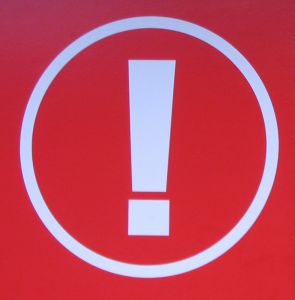 Sometimes you learn something new from unexpected places. Sometimes you have to challenge your assumptions if you want to have any hope of solving an otherwise intractable problem. Sometimes, just because common knowledge is widely accepted, does not mean that it should be. A recent appeal I was working on made this clear.
Sometimes you learn something new from unexpected places. Sometimes you have to challenge your assumptions if you want to have any hope of solving an otherwise intractable problem. Sometimes, just because common knowledge is widely accepted, does not mean that it should be. A recent appeal I was working on made this clear.
Every New York attorney knows the test for defeating a motion for summary judgement: a party must offer evidence in admissible form sufficient to create a genuine issue of material fact that requires a trial. Most probably know the citation for the rule by heart. Zuckerman v. City of New York, 49 N.Y.2d 557, 404 N.E.2d 718 (1980), is one of the most frequently cited cases in New York. It is common practice, based on that rule, to disregard inadmissible evidence and, most often, to not even offer it in opposition to a summary judgement motion. After all, why should you offer evidence that will not be considered? There is really only one problem with this idea: it is wrong.
The actual quote from Zuckerman v. City of New York, 49 N.Y.2d 557, 562, 404 N.E.2d 718, 720 (1980) is:
We have repeatedly held that one opposing a motion for summary judgment must produce evidentiary proof in admissible form sufficient to require a trial of material questions of fact on which he rests his claim or must demonstrate acceptable excuse for his failure to meet the requirement of tender in admissible form; mere conclusions, expressions of hope or unsubstantiated allegations or assertions are insufficient (Alvord and Swift v. Stewart M. Muller Constr. Co., 46 N.Y.2d 276, 281-282, 413 N.Y.S.2d 309, 385 N.E.2d 1238; Fried v. Bower & Gardner, 46 N.Y.2d 765, 767, 413 N.Y.S.2d 650, 386 N.E.2d 258; Platzman v. American Totalisator Co., 45 N.Y.2d 910, 912, 411 N.Y.S.2d 230, 383 N.E.2d 876; Mallad Constr. Corp. v. County Fed. Sav. & Loan Ass’n, 32 N.Y.2d 285, 290, 344 N.Y.S.2d 925, 298 N.E.2d 96).
The rule does not mean that a party should self-edit itself from submitting inadmissible evidence in opposition to a motion for summary judgement. Whereas inadmissible evidence is insufficient on its own, it can help turn mere expressions of hope into genuine issues of fact that require a trial.
The case that made this clear is Gier v. CGF Health Sys., Inc., 307 A.D.2d 729, 762 N.Y.S.2d 472 (4th Dept. 2003). It is a medical malpractice/wrongful death action in which the decedent was admitted to the hospital with a diagnosis of a recurrent abdominal hernia and died four hours later of a ruptured abdominal aortic aneurysm. The central issue was whether the Defendant, who was the on-call attending physician at the time the decedent was admitted to the hospital, was notified of her admission before his shift ended. If he was notified then there was the requisite physician-patient relationship; otherwise, there was not. The Defendant testified at his deposition that he had not been notified and he submitted his deposition testimony in support of his motion for summary judgement to dismiss the complaint against him.
In opposition, Plaintiff submitted affidavits of two doctors, Cheng and Bruce. Neither remembered the specific circumstances of decedent’s admission. Instead, they each testified to habit evidence: that it was normal practice and procedure for the attending physician, whoever, that might be, to be notified when a patient is admitted to the hospital. Those two affidavits were insufficient, according to the lower court, to raise a genuine issue of material, triable fact.
Plaintiff also submitted the decedent’s hospital chart, which contained numerous references to the Defendant as the decedent’s attending physician and, more importantly, the last major piece of evidence: an unsworn memorandum of a Dr. Cudmore, which stated that the chief surgical resident told Dr. Cudmore that the Defendant had been notified of the decedent’s admission while he was still on duty. The lower court did not even consider it, because it clearly was inadmissible. It was an unsworn document that relayed two unsworn, hearsay, statements; it was double hearsay, at least.
Continue reading
 How to vacate a default judgement in New York is something every potential litigant should know. It is a topic filled with cautionary tales of second chances, heartache and redemption, as we have talked about in the past. It also demonstrates the importance of thinking outside the box when you try to solve an otherwise intractable problem.
How to vacate a default judgement in New York is something every potential litigant should know. It is a topic filled with cautionary tales of second chances, heartache and redemption, as we have talked about in the past. It also demonstrates the importance of thinking outside the box when you try to solve an otherwise intractable problem.  New York Business Lawyer Blog
New York Business Lawyer Blog


 Sometimes you learn something new from unexpected places. Sometimes you have to challenge your assumptions if you want to have any hope of solving an otherwise intractable problem. Sometimes, just because common knowledge is widely accepted, does not mean that it should be. A recent appeal I was working on made this clear.
Sometimes you learn something new from unexpected places. Sometimes you have to challenge your assumptions if you want to have any hope of solving an otherwise intractable problem. Sometimes, just because common knowledge is widely accepted, does not mean that it should be. A recent appeal I was working on made this clear. A contract for the sale of goods: one business, or merchant, buys a part from another. They agree on quantity, price, and delivery. The Seller sends the Buyer a purchase order and delivers the goods, and the Buyer pays. It all sounds easy, but as we previously said, a lot can go wrong in a
A contract for the sale of goods: one business, or merchant, buys a part from another. They agree on quantity, price, and delivery. The Seller sends the Buyer a purchase order and delivers the goods, and the Buyer pays. It all sounds easy, but as we previously said, a lot can go wrong in a  Trial lawyers are problem solvers. That is what they have to do and what their clients expect them to do. The biggest problem they face is how to persuade a jury. After all, the last time a trial went completely as planned was probably the first time one ever did.
Trial lawyers are problem solvers. That is what they have to do and what their clients expect them to do. The biggest problem they face is how to persuade a jury. After all, the last time a trial went completely as planned was probably the first time one ever did.  Vacating a default judgement in New York, as we have
Vacating a default judgement in New York, as we have  We’ve spent a decent amount of time discussing how lawyers try to
We’ve spent a decent amount of time discussing how lawyers try to  Summary judgement motions in New York are strange things. When used in the right way they can bring long, arduous litigation to an end merely by submitting papers to the court, without the need to call messy witnesses, susceptible to skillful cross-examination, to trial to be judged by a jury. They can be a lawyer’s best friend, or worst enemy. A lot depends upon the approach a lawyer takes towards them. They can take the place of a trial but how you approach them should be much like a trial. The actual motion depends upon the facts and circumstances of the particular case. There is an acronym that sums it up, one I often say to myself: KISS (as in: keep it simple, stupid). There’s also an apt idiom: break it down. Like a trial, it’s important to stay focused and to keep the decision makers focused on what you believe is important; because you have to give them a reason to rule in your client’s favor.
Summary judgement motions in New York are strange things. When used in the right way they can bring long, arduous litigation to an end merely by submitting papers to the court, without the need to call messy witnesses, susceptible to skillful cross-examination, to trial to be judged by a jury. They can be a lawyer’s best friend, or worst enemy. A lot depends upon the approach a lawyer takes towards them. They can take the place of a trial but how you approach them should be much like a trial. The actual motion depends upon the facts and circumstances of the particular case. There is an acronym that sums it up, one I often say to myself: KISS (as in: keep it simple, stupid). There’s also an apt idiom: break it down. Like a trial, it’s important to stay focused and to keep the decision makers focused on what you believe is important; because you have to give them a reason to rule in your client’s favor.  How do you prepare a witness to testify at trial? That seems like a fair question; but what’s the best way to do it? It seems like there are as many different answers as there are people to answer it.
How do you prepare a witness to testify at trial? That seems like a fair question; but what’s the best way to do it? It seems like there are as many different answers as there are people to answer it.  It is not always easy to obtain a default judgement in New York. It is harder, still, to vacate one, especially when the defaulting party has a history of missing deadlines or otherwise not doing what the court wants. A recent case from the Third Department,
It is not always easy to obtain a default judgement in New York. It is harder, still, to vacate one, especially when the defaulting party has a history of missing deadlines or otherwise not doing what the court wants. A recent case from the Third Department,  We’ve spent a lot of time this past summer talking about how important negotiations are to businesses and individuals alike, and how various negotiation strategies work together to produce desired, and sometimes unintended, results. This time, we’re coming back to one useful strategy in particular, which is known by the ever impressively indecipherable acronym BATNA, to show how it can be used, abused, and overplayed. Put another way: BATNA Beware.
We’ve spent a lot of time this past summer talking about how important negotiations are to businesses and individuals alike, and how various negotiation strategies work together to produce desired, and sometimes unintended, results. This time, we’re coming back to one useful strategy in particular, which is known by the ever impressively indecipherable acronym BATNA, to show how it can be used, abused, and overplayed. Put another way: BATNA Beware.